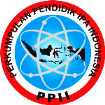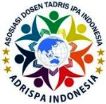Augmented Reality in Chemistry Education: A Literature Review of Advantages on Learners
Abstract
Education moves forward together with technology. In recent years, application of modern technology known as Augmented Reality (AR) has significantly shifted the paradigm of learning process in education, including Chemistry education. Many researchers have explored the potential of AR in education. Unfortunately, literatures on its benefits for leaners in Chemistry education are limited and inaccessible. This research-based paper manifests underlying usefulness of AR in teaching and learning process of chemistry education in terms of (i) Mastering chemistry content and (ii) motivation, interest and attitude. The researchers aspired that with the contents of this paper, other researchers and interested parties could use them for their literature and as incentive to improve current available AR software or develop further advance technology program of AR in chemistry.
Keywords: augmented reality, chemistry, education, technology, advantages.Full Text:
PDFReferences
Akçayır, M., & Akçayır, G. (2017). Advantages and Challenges Associated with Augmented Reality for Education: A Systematic Review of The Literature. Educational Research Review, 20, 1-11.
Alves Fernandes, B. C., & Fernández Sánchez, J. (2010). Acceptance of an Augmented Reality System as A Visualization Tool for Computer-Aided Design Classes. Digital Education Review (16), 66-86.
Balazs, D., & Attila, E. (2006). Volumetric Medical Intervention Aiding Augmented Reality Device. Paper presented at the 2006 2nd International Conference on Information & Communication Technologies.
Behmke, D., Kerven, D., Lutz, R., Paredes, J., Pennington, R., Brannock, E., . . . Stevens, K. (2018). Augmented Reality Chemistry: Transforming 2-D Molecular Representations into Interactive 3-D Structures. Paper presented at the Proceedings of the Interdisciplinary STEM Teaching and Learning Conference.
Boonterng, L., & Srisawasdi, N. (2015). Monitoring Gender Participation with Augmented Reality represented Chemistry Phenomena and Promoting Critical Thinking. Paper presented at the Workshop Proceedings of the 23rd International Conference on Computers in Education ICCE 2015.
Cai, S., Wang, X., & Chiang, F.-K. (2014). A case study of Augmented Reality simulation system application in a chemistry course. Computers in human behavior, 37, 31-40.
Chang, K. E., Chang, C. T., Hou, H. T., Sung, Y. T., Chao, H. L., & Lee, C. M. (2014). Development and behavioral pattern analysis of a mobile guide system with augmented reality for painting appreciation instruction in an art museum. Computers & Education, 71, 185-197.
Chen, Y.-C. (2006). A Study of Comparing the Use of Augmented Reality and Physical Models in Chemistry Education. Paper Presented at the Proceedings of the 2006 ACM International Conference on Virtual Reality Continuum and its Applications.
Comai, S., & Mazza, D. (2010). A Haptic-Based Framework for Chemistry Education: Experiencing Molecular Interactions with Touch. Paper presented at the International Conference on Technology Enhanced Learning.
Crandall, P. G., Engler, R. K., Beck, D. E., Killian, S. A., O'Bryan, C. A., Jarvis, N., & Clausen, E. (2015). Development of an Augmented Reality Game to Teach Abstract Concepts in Food Chemistry. Journal of Food Science Education, 14(1), 18-23.
Dave, I. R., Chaudhary, V., & Upla, K. P. (2019). Simulation of Analytical Chemistry Experiments on Augmented Reality Platform. In Progress in Advanced Computing and Intelligent Engineering (pp. 393-403): Springer.
Drysdale, J. S., Graham, C. R., Spring, K. J., & Halverson, L. R. (2013). An Analysis of Research Trends in Dissertations and Theses Studying Blended Learning. Internet and Higher Education, 17, 90-100.
Fjeld, M., Fredriksson, J., Ejdestig, M., Duca, F., Bötschi, K., Voegtli, B., & Juchli, P. (2007). Tangible User Interface for Chemistry Education: Comparative Evaluation and Re-Design. Paper presented at the Proceedings of the SIGCHI Conference on Human Factors in Computing Systems.
Hou, H.-T., & Lin, Y.-C. (2017). The Development and Evaluation of an Educational Game Integrated with Augmented Reality and Virtual Laboratory for Chemistry Experiment.
DOI: http://dx.doi.org/10.24014/jnsi.v5i1.16805
Refbacks
- There are currently no refbacks.

Journal of Natural Science and Integration
E-ISSN: 2620-5092 P-ISSN: 2620-4967
Published By:
Department of Science Education, Faculty of Education and Teacher Training,
State Islamic University of Sultan Syarif Kasim Riau, Indonesia
Mailing Address:
Jl. H.R Soebrantas Km. 15 No. 155
Kelurahan Simpang Baru
Kecamatan Tuah Madani, Pekanbaru, Riau, Indonesia
Email: jnsi.tadrisipa@uin-suska.ac.id
Indexed By:
Journal of Natural Science and Integration is licensed under a Creative Commons Attribution 4.0 International License.


_-_Copyy2.png)






.jpg)
.png)
.jpg)
.jpg)




